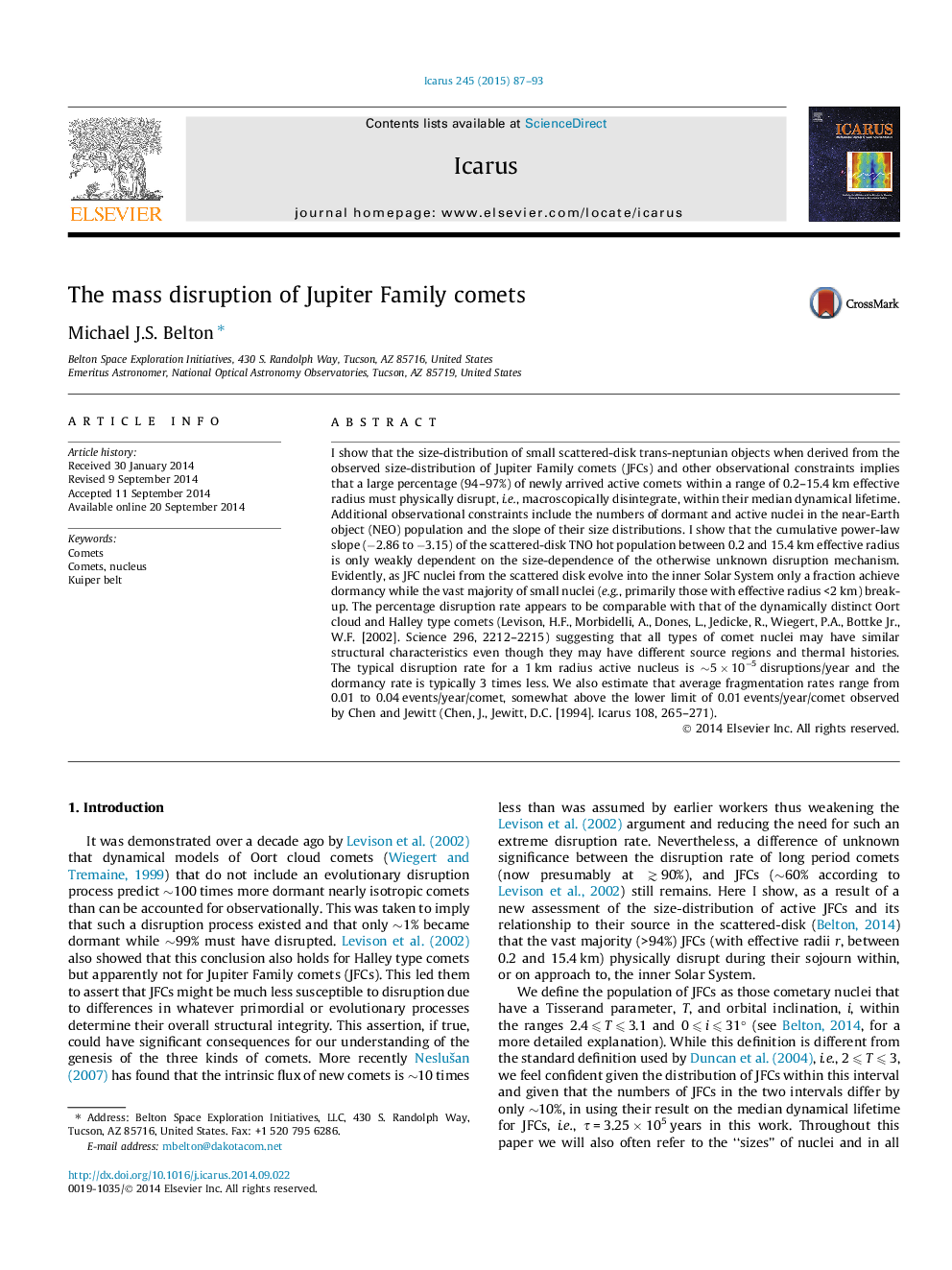| کد مقاله | کد نشریه | سال انتشار | مقاله انگلیسی | نسخه تمام متن |
|---|---|---|---|---|
| 8137392 | 1523545 | 2015 | 7 صفحه PDF | دانلود رایگان |
عنوان انگلیسی مقاله ISI
The mass disruption of Jupiter Family comets
ترجمه فارسی عنوان
انقباض جمعی ستاره های ستاره ی مشتری
دانلود مقاله + سفارش ترجمه
دانلود مقاله ISI انگلیسی
رایگان برای ایرانیان
کلمات کلیدی
دنباله دار دنباله دار، هسته، کمربند کوئیپر،
موضوعات مرتبط
مهندسی و علوم پایه
علوم زمین و سیارات
علوم فضا و نجوم
چکیده انگلیسی
I show that the size-distribution of small scattered-disk trans-neptunian objects when derived from the observed size-distribution of Jupiter Family comets (JFCs) and other observational constraints implies that a large percentage (94-97%) of newly arrived active comets within a range of 0.2-15.4Â km effective radius must physically disrupt, i.e., macroscopically disintegrate, within their median dynamical lifetime. Additional observational constraints include the numbers of dormant and active nuclei in the near-Earth object (NEO) population and the slope of their size distributions. I show that the cumulative power-law slope (â2.86 to â3.15) of the scattered-disk TNO hot population between 0.2 and 15.4Â km effective radius is only weakly dependent on the size-dependence of the otherwise unknown disruption mechanism. Evidently, as JFC nuclei from the scattered disk evolve into the inner Solar System only a fraction achieve dormancy while the vast majority of small nuclei (e.g., primarily those with effective radius <2Â km) break-up. The percentage disruption rate appears to be comparable with that of the dynamically distinct Oort cloud and Halley type comets (Levison, H.F., Morbidelli, A., Dones, L., Jedicke, R., Wiegert, P.A., Bottke Jr., W.F. [2002]. Science 296, 2212-2215) suggesting that all types of comet nuclei may have similar structural characteristics even though they may have different source regions and thermal histories. The typical disruption rate for a 1Â km radius active nucleus is â¼5Â ÃÂ 10â5Â disruptions/year and the dormancy rate is typically 3 times less. We also estimate that average fragmentation rates range from 0.01 to 0.04Â events/year/comet, somewhat above the lower limit of 0.01Â events/year/comet observed by Chen and Jewitt (Chen, J., Jewitt, D.C. [1994]. Icarus 108, 265-271).
ناشر
Database: Elsevier - ScienceDirect (ساینس دایرکت)
Journal: Icarus - Volume 245, 1 January 2015, Pages 87-93
Journal: Icarus - Volume 245, 1 January 2015, Pages 87-93
نویسندگان
Michael J.S. Belton,
